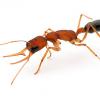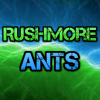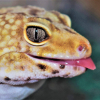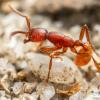- Formiculture.com
- Forums
- Gallery
- Members
- Member Map
- Chat
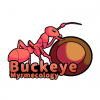
How to find Colobopsis impressa and missisippiensis
Started By
madbiologist
, Apr 12 2020 12:51 PM
27 replies to this topic
#1
 Offline
-
Posted April 12 2020 - 12:51 PM
Offline
-
Posted April 12 2020 - 12:51 PM
One of my big targets this year will be Colobopsis, however, I've yet to see a Colobopsis worker, even though they are around here. I know that impressa are generalists, and missisippiensis live in white ash, and found in groups, but that's about it. I also know that missisippiensis can be found in the hundreds at blacklights soon after Camponotus fly, but I don't particularly want to wait until then. So since I've seen that some of you have kept Colobopsis, do you have any tips to find them?
Sent from my Pixel XL using Tapatalk
Sent from my Pixel XL using Tapatalk
#2
 Offline
-
Posted April 12 2020 - 12:58 PM
Offline
-
Posted April 12 2020 - 12:58 PM
I really really really really from the depths of my soul with all that is within me wish that THERE WERE SOME COLOBOPSIS UP HERE IN NEW YORK!!!!!!
- AntsDakota likes this
#3
 Offline
-
Posted April 12 2020 - 1:02 PM
Offline
-
Posted April 12 2020 - 1:02 PM
You stole my line, lol.
- Da_NewAntOnTheBlock likes this
"God made..... all the creatures that move along the ground according to their kinds. (including ants) And God saw that it was good. Genesis 1:25 NIV version
#4
 Offline
-
Posted April 12 2020 - 7:29 PM
Offline
-
Posted April 12 2020 - 7:29 PM
I assume they would be similar to Pseudomyrmex. Lay out some baits, honey, or in the case of colobopsis some form of urea can work too, and track any workers that show up back to the nest.
#5
 Offline
-
Posted April 12 2020 - 7:32 PM
Offline
-
Posted April 12 2020 - 7:32 PM
I don't know where I'd lay bait. I don't know whether workers even leave their tree or not.I assume they would be similar to Pseudomyrmex. Lay out some baits, honey, or in the case of colobopsis some form of urea can work too, and track any workers that show up back to the nest.
Sent from my Pixel XL using Tapatalk
#6
 Offline
-
Posted April 12 2020 - 8:00 PM
Offline
-
Posted April 12 2020 - 8:00 PM
In my experience, impressa, pylartes and obliqua (three of the four native eastern Colobopsis excluding Florida's riehlii) are generalists, nesting in just about any sort of twig, though I find many species nesting in hollows in White Ash trees from abandoned mississippiensis chambers. I typically find colonies 2 meters or higher off the ground, though I occasionally see nests lower on trees, particularly with a large mississippiensis satellite nest that was in some of the young twigs sprouting out of the base of the tree. Colonies of most species are typically restricted to dead portions of living trees, the exceptions being mississippiensis and occasionally obliqua, which I have seen nesting in still living portions of Ash limbs, likely overtaking the mississippiensis colony there before them. The plants I've seen these ants nesting in include Muscadine, White Ash, Flowering Dogwood, Fishpole Bamboo, Water Oak, Red Maple, Post Oak, Wild Blackberry and Groundsel. However, impressa (and by extension riehlii) is known to nest in dead portions of Red Mangroves in Florida. If you really want to find these ants, you'll certainly have to do some climbing, because they certainly do not nest close to the ground by any means, and climbing is typically the only viable method of colony collections. And heads up, once you find a nest, you might want to make sure there are no other nests nearby, as they are known to make multiple satellite nests as the colonies are surprisingly large.
- FeedTheAnts and TennesseeAnts like this
Currently Keeping:
Camponotus chromaiodes, Camponotus nearcticus, Stigmatomma pallipes, Strumigenys brevisetosa, Strumigenys clypeata, Strumigenys louisianae, Strumigenys membranifera, Strumigenys reflexa, Strumigenys rostrata
#7
 Offline
-
Posted April 12 2020 - 8:05 PM
Offline
-
Posted April 12 2020 - 8:05 PM
What size sticks do you find them nesting in, and where generally in the tree? And what do I look for in sticks to see if any are there? I don't really know what it looks like when a major or queen is blocking the nest. Also how large do said colonies get, and are the species other than missisippiensis required to be polygynous too?In my experience, impressa, pylartes and obliqua (three of the four native eastern Colobopsis excluding Florida's riehlii) are generalists, nesting in just about any sort of twig, though I find many species nesting in hollows in White Ash trees from abandoned mississippiensis chambers. I typically find colonies 2 meters or higher off the ground, though I occasionally see nests lower on trees, particularly with a large mississippiensis satellite nest that was in some of the young twigs sprouting out of the base of the tree. Colonies of most species are typically restricted to dead portions of living trees, the exceptions being mississippiensis and occasionally obliqua, which I have seen nesting in still living portions of Ash limbs, likely overtaking the mississippiensis colony there before them. The plants I've seen these ants nesting in include Muscadine, White Ash, Flowering Dogwood, Fishpole Bamboo, Water Oak, Red Maple, Post Oak, Wild Blackberry and Groundsel. However, impressa (and by extension riehlii) is known to nest in dead portions of Red Mangroves in Florida. If you really want to find these ants, you'll certainly have to do some climbing, because they certainly do not nest close to the ground by any means, and climbing is typically the only viable method of colony collections. And heads up, once you find a nest, you might want to make sure there are no other nests nearby, as they are known to make multiple satellite nests as the colonies are surprisingly large.
Sent from my Pixel XL using Tapatalk
#8
 Offline
-
Posted April 12 2020 - 8:14 PM
Offline
-
Posted April 12 2020 - 8:14 PM
What size sticks do you find them nesting in, and where generally in the tree? And what do I look for in sticks to see if any are there? I don't really know what it looks like when a major or queen is blocking the nest. Also how large do said colonies get, and are the species other than missisippiensis required to be polygynous too?In my experience, impressa, pylartes and obliqua (three of the four native eastern Colobopsis excluding Florida's riehlii) are generalists, nesting in just about any sort of twig, though I find many species nesting in hollows in White Ash trees from abandoned mississippiensis chambers. I typically find colonies 2 meters or higher off the ground, though I occasionally see nests lower on trees, particularly with a large mississippiensis satellite nest that was in some of the young twigs sprouting out of the base of the tree. Colonies of most species are typically restricted to dead portions of living trees, the exceptions being mississippiensis and occasionally obliqua, which I have seen nesting in still living portions of Ash limbs, likely overtaking the mississippiensis colony there before them. The plants I've seen these ants nesting in include Muscadine, White Ash, Flowering Dogwood, Fishpole Bamboo, Water Oak, Red Maple, Post Oak, Wild Blackberry and Groundsel. However, impressa (and by extension riehlii) is known to nest in dead portions of Red Mangroves in Florida. If you really want to find these ants, you'll certainly have to do some climbing, because they certainly do not nest close to the ground by any means, and climbing is typically the only viable method of colony collections. And heads up, once you find a nest, you might want to make sure there are no other nests nearby, as they are known to make multiple satellite nests as the colonies are surprisingly large.
Sent from my Pixel XL using Tapatalk
Colonies can typically be found in sticks no bigger around than one's finger, though larger, older mississippiensis colonies may be found within larger, stockier branches as big around as one's arm. There is no real set height in where a Colobopsis colony may be found, though colonies are typically located higher than 2 meters above-ground. When looking for a colony in a stick you believe may be suitable, be sure to check for small, circular holes, typically in a raised area of the twig or in an old leaf "hole" in the case with mississippiensis. You will typically not see a major or queen blocking the nest entrance, however. Once a nest has been found, take it to a controlled location and carefully crack it open, referable at the point the entrance hole is located in order to reduce worker deaths. Colobopsis colonies can range from a few hundred workers into the thousands, depending on the species and the age of the colony. Also, in my experience, all species are polygynous.
Currently Keeping:
Camponotus chromaiodes, Camponotus nearcticus, Stigmatomma pallipes, Strumigenys brevisetosa, Strumigenys clypeata, Strumigenys louisianae, Strumigenys membranifera, Strumigenys reflexa, Strumigenys rostrata
#9
 Offline
-
Posted April 12 2020 - 8:16 PM
Offline
-
Posted April 12 2020 - 8:16 PM
What do you mean by referable to the entrance hole, and why wouldn't I see majors blocking?Colonies can typically be found in sticks no bigger around than one's finger, though larger, older mississippiensis colonies may be found within larger, stockier branches as big around as one's arm. There is no real set height in where a Colobopsis colony may be found, though colonies are typically located higher than 2 meters above-ground. When looking for a colony in a stick you believe may be suitable, be sure to check for small, circular holes, typically in a raised area of the twig or in an old leaf "hole" in the case with mississippiensis. You will typically not see a major or queen blocking the nest entrance, however. Once a nest has been found, take it to a controlled location and carefully crack it open, referable at the point the entrance hole is located in order to reduce worker deaths. Colobopsis colonies can range from a few hundred workers into the thousands, depending on the species and the age of the colony. Also, in my experience, all species are polygynous.What size sticks do you find them nesting in, and where generally in the tree? And what do I look for in sticks to see if any are there? I don't really know what it looks like when a major or queen is blocking the nest. Also how large do said colonies get, and are the species other than missisippiensis required to be polygynous too?In my experience, impressa, pylartes and obliqua (three of the four native eastern Colobopsis excluding Florida's riehlii) are generalists, nesting in just about any sort of twig, though I find many species nesting in hollows in White Ash trees from abandoned mississippiensis chambers. I typically find colonies 2 meters or higher off the ground, though I occasionally see nests lower on trees, particularly with a large mississippiensis satellite nest that was in some of the young twigs sprouting out of the base of the tree. Colonies of most species are typically restricted to dead portions of living trees, the exceptions being mississippiensis and occasionally obliqua, which I have seen nesting in still living portions of Ash limbs, likely overtaking the mississippiensis colony there before them. The plants I've seen these ants nesting in include Muscadine, White Ash, Flowering Dogwood, Fishpole Bamboo, Water Oak, Red Maple, Post Oak, Wild Blackberry and Groundsel. However, impressa (and by extension riehlii) is known to nest in dead portions of Red Mangroves in Florida. If you really want to find these ants, you'll certainly have to do some climbing, because they certainly do not nest close to the ground by any means, and climbing is typically the only viable method of colony collections. And heads up, once you find a nest, you might want to make sure there are no other nests nearby, as they are known to make multiple satellite nests as the colonies are surprisingly large.
Sent from my Pixel XL using Tapatalk
Edit: have you ever kept missisippiensis successfully, and what does it entail? Since they are specialists, do they need access to white ash wood?
Sent from my Pixel XL using Tapatalk
Edited by madbiologist, April 12 2020 - 10:18 PM.
#10
 Offline
-
Posted April 13 2020 - 8:28 AM
Offline
-
Posted April 13 2020 - 8:28 AM
Lay baits on the trees, just to see if the trees have colobopsis in them.
#11
 Offline
-
Posted April 14 2020 - 3:16 AM
Offline
-
Posted April 14 2020 - 3:16 AM
I have yet to see a successful journal on these. Makes me doubt they’re worth the effort. Learn to enjoy them in their natural habitat.
"The ants are a people not strong, yet they prepare their meat in the summer." Prov. 30:25
Keep ordinary ants in extraordinary ways.
Keep ordinary ants in extraordinary ways.
#12
 Offline
-
Posted April 14 2020 - 6:35 AM
Offline
-
Posted April 14 2020 - 6:35 AM
We tried last year with queens, and I suspect we would have done ok, but we didn't know they were polygynous, and when we had added them together it was too late in the season and they died before the could reach pupae.I have yet to see a successful journal on these. Makes me doubt they’re worth the effort. Learn to enjoy them in their natural habitat.
Sent from my Pixel XL using Tapatalk
#13
 Offline
-
Posted April 14 2020 - 7:03 AM
Offline
-
Posted April 14 2020 - 7:03 AM
I will be assisting in the Ohio colobopsis effort this year hopefully, ima find some places with high quantities and densities of white ash and try my luck there, if I can get a few 5 queen groups going it will be golden
- AntsDakota likes this
#14
 Offline
-
Posted April 14 2020 - 7:10 AM
Offline
-
Posted April 14 2020 - 7:10 AM
Too cold up here for them. ![]()
"God made..... all the creatures that move along the ground according to their kinds. (including ants) And God saw that it was good. Genesis 1:25 NIV version
#15
 Offline
-
Posted April 14 2020 - 7:32 AM
Offline
-
Posted April 14 2020 - 7:32 AM
I saw multiple queen alates last year. They seemed to enjoy coming into my house. I kept them each for a while, but they were restless and never shed their wings, so I gave up on them.
I accidentally froze all my ants
#16
 Offline
-
Posted April 14 2020 - 7:53 AM
Offline
-
Posted April 14 2020 - 7:53 AM
I have yet to see a successful journal on these. Makes me doubt they’re worth the effort. Learn to enjoy them in their natural habitat.
Yes, just scale a tree and sit on a branch 20 feet up and watch them go about their daily lives. If you need to follow them just crawl around on the tree ![]()
- Swirlysnowflake likes this
#17
 Offline
-
Posted April 14 2020 - 8:47 AM
Offline
-
Posted April 14 2020 - 8:47 AM
I will be assisting in the Ohio colobopsis effort this year hopefully, ima find some places with high quantities and densities of white ash and try my luck there, if I can get a few 5 queen groups going it will be golden
Please explain what the Ohio Colobopsis effort is. Thanks.
#18
 Offline
-
Posted April 14 2020 - 9:11 AM
Offline
-
Posted April 14 2020 - 9:11 AM
I have yet to see a successful journal on these. Makes me doubt they’re worth the effort. Learn to enjoy them in their natural habitat.
Completely worth it when you do it right. You just gotta make sure they have at least 5 queens. Last year my colony got up to 10 workers.
My Main Journal | My Neivamyrmex Journal | My Ant Adoption | My YouTube
Join the TennesseeAnts Discord Server! https://discord.gg/JbKwPgs
#19
 Offline
-
Posted April 14 2020 - 9:17 AM
Offline
-
Posted April 14 2020 - 9:17 AM
Yes, I've read that journal. What's the optimal number of queens? They flock to our blacklights in the hundreds, so I can get many more.Completely worth it when you do it right. You just gotta make sure they have at least 5 queens. Last year my colony got up to 10 workers.I have yet to see a successful journal on these. Makes me doubt they’re worth the effort. Learn to enjoy them in their natural habitat.
Sent from my Pixel XL using Tapatalk
#20
 Offline
-
Posted April 14 2020 - 9:24 AM
Offline
-
Posted April 14 2020 - 9:24 AM
If they won't fight, I would put a dozen or two together, but that's just me.
"God made..... all the creatures that move along the ground according to their kinds. (including ants) And God saw that it was good. Genesis 1:25 NIV version
0 user(s) are reading this topic
0 members, 0 guests, 0 anonymous users





